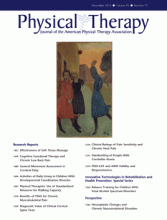Abstract
Background Early identification of children at high risk of future neurodevelopmental disability is important for the initiation of appropriate therapy. In research settings, the assessment of fidgety movements (FMs) at 3 months supports a general movement assessment (GMA) as a strong predictor for subsequent motor development, but there are few studies from routine clinical settings.
Objective The study objective was to examine the relationship between FMs and neurodevelopmental outcome by the age of 2 years in high-risk infants in a routine hospital clinical setting.
Design This was a prospective study.
Methods A GMA was performed in 87 high-risk infants at 3 months after term age. The infants were clinically assessed for cerebral palsy (CP) at 2 years. Sensitivity, specificity, likelihood ratios, and positive and negative predictive values were computed. The relative risk of motor problems by the age of 2 years, according to the GMA, was estimated.
Results Of the infants with normal FMs, 93% (50/54) had normal development and none was diagnosed with CP, whereas 75% (12/16) with abnormal or sporadic FMs had normal development. In contrast, 53% (9/17) of those without FMs had CP. When the GMA was considered to be a test for CP and absent FMs were considered to be a positive test result, the sensitivity was 90% and the specificity was 90%. The likelihood ratios for positive and negative test results were 8.7 and 0.1, respectively. The negative predictive value was 99%, and the positive predictive value was 53%. The risk of motor problems by the age of 2 years increased linearly with the extent of pathological results on the GMA and was 10 times higher when FMs were absent at 3 months than when FMs were normal.
Limitations The relatively small study sample was a study limitation.
Conclusions When applied in a routine clinical setting, the GMA strongly predicted neurodevelopmental impairments at 2 years in high-risk infants.
Footnotes
Dr Øberg provided concept/idea/research design. All authors provided writing and data analysis. Dr Øberg provided data collection and project management. Dr Jacobsen and Dr Jørgensen provided consultation (including review of manuscript before submission).
The local data protection official at University Hospital of North Norway approved the study.
- Received October 2, 2014.
- Accepted May 21, 2015.












